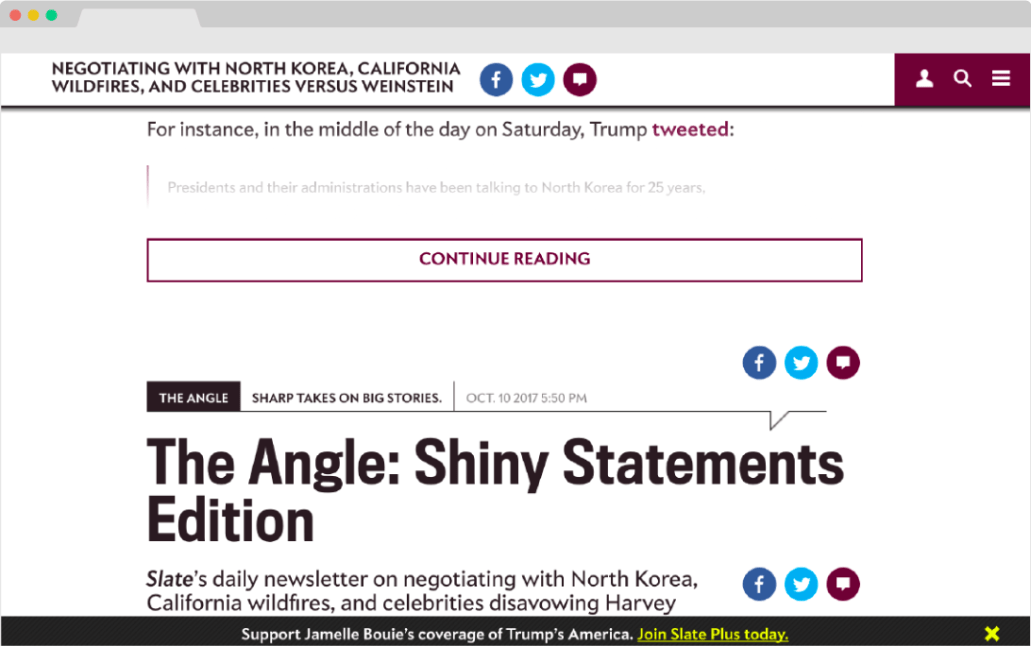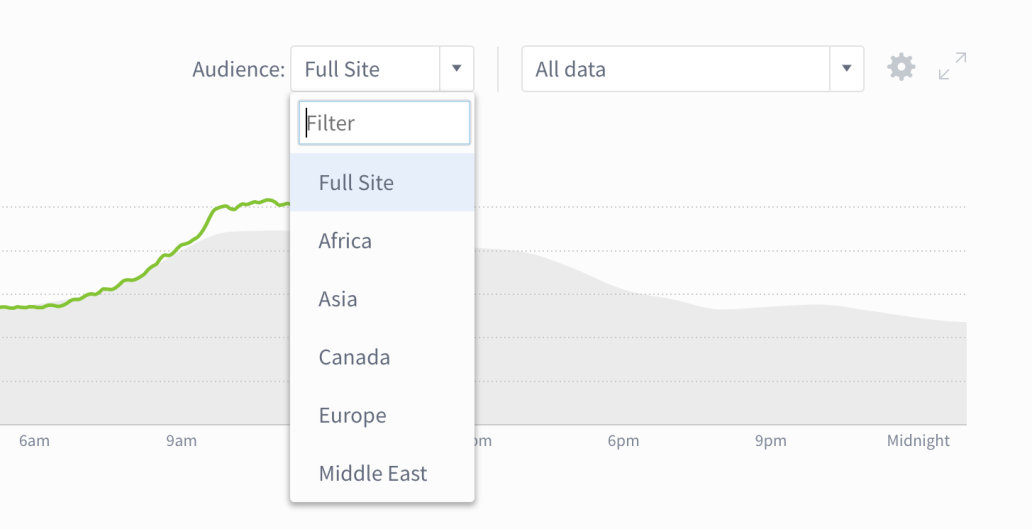Audience loyalty is the Holy Grail and the New Black—all rolled into one for digital media. But that loyalty can become a fleeting challenge in a media landscape overflowing with endless reader choices.
Enter WordPress VIP, a WordPress-based, enterprise-grade CMS, and Parse.ly, its analytics solution. Together, they drive audience loyalty for the world’s largest digital publishers by powering secure, scalable websites and infrastructure and helping them deliver personalized, data-driven, and engaging content experiences.
This fosters profound connections with audiences, giving them reasons to return again and again to read the stories and content you publish.
Here are four ways WordPress VIP and Parse.ly help publishers achieve that audience loyalty.
- Personalizing content experiences
- Monitoring and optimizing for loyalty metrics
- Segmenting audiences to foster loyalty and repeat visits
- Having a secure and performant website
Personalizing content experiences based on analytics and AI
For media brands, content personalization is a key strategy for engaging audiences, as it drives engagement, recirculation, and loyalty. In fact, our Content Matters for C-Executives 2024 Report noted that creating high-quality, personalized content experiences tailored to individual audiences’ needs is a top focus area for senior leadership.
Parse.ly plugin and Parse.ly API
Whether they use a WordPress-based CMS or not, media brands can harness the combined powers of WordPress VIP and Parse.ly to personalize content experiences on their websites or other channels, such as newsletters.
It all starts with the Parse.ly Content API, which analyzes user behavior and content subject matter to power on-site features that recommend related and relevant content to users. Brands can even slice and dice those content recommendations in many ways: by author, content tag, or top-converting content, and by channel, referrer, or social sharer.
If you’re on WordPress, the Recommendations Block, powered by the Parse.ly API, makes this personalization even simpler for media organizations and newsrooms, as it comes preloaded in the WordPress Gutenberg editor.
Slate’s personalized infinite-scroll experience
Parse.ly customer Slate, the pioneering web magazine covering politics, news, business, technology, and culture, used the Parse.ly API to power its personalization strategy and improve audience loyalty.
This is showcased to best effect in Slate’s infinite-scroll experience: when readers hit the bottom of one article, another relevant one appears—based on what they’ve read in the past and what content is related.
The experience keeps readers reading, improves engaged time, and fosters loyalty. In the bargain, it also helps align the content priorities of both readers and the editorial teams who write for them.

“If readers spend more time with content that they value, they’ll be more likely to view more ads while they’re reading, they’ll be more likely to share our content, and they’ll be more likely to join our membership program Slate Plus,” says Slate Director of Product Development David Stern.
Monitoring and optimizing for loyalty metrics
To drive audience loyalty requires a data-driven approach.
Parse.ly helps democratize first-party audience loyalty data across the newsroom and organization, empowering journalists to refine their content strategy, validate intuitive approaches, and experiment with publishing strategies. It also helps align everyone with what your audience wants.
Parse.ly’s Audience Overview Report offers a monthly overview of your site’s audience, including visitors, duration of visits, time between visits, and the breakdown between new and returning visitors. Consider it a publisher’s scorecard to track audience loyalty.
3 key Parse.ly loyalty metrics to optimize for
Diving deeper into what drives audience loyalty on a granular level are three key Parse.ly metrics: engaged time, recirculation rate, and returning visitors.
Engaged time
This measures how much time audiences spend actively engaged with specific content (articles, audio, video, etc.) in an active browser window. In short, it reveals what content readers prefer to engage with.
Recirculation rate
This measures the percentage of users who click through to another piece of content after viewing a specific post on your site. It reveals which content is most effective at driving traffic to other articles—the inverse of bounce rate.
Returning visitors
This helps identify how many users have been to your website before. More importantly, it can reveal which topics, articles, or stories are driving a high returning visitor count, i.e., keeping audiences engaged and loyal.
Segmenting your audiences to foster loyalty and repeat visits
Audience segmentation allows media brands to understand and feed the interests of specific groups of readers.
Moving beyond assumptions about readers as a single, homogenous unit lets you better cater to their needs and preferences, improving your content strategy.
Harnessing audience segmentation: 3 ways with Parse.ly
“Publishers who show how their platform is maintaining its… loyalty in a crowded market will be the ones who foster confidence in advertisers and stand out when budgets are being allocated,” says Trevor Vagg of Kantar Media, writing about audience loyalty in PressGazette.
Helping media brands find their most valuable and loyal audience segments, Parse.ly offers a range of audience segmentation options accessible from a dedicated tab on the Parse.ly Dashboard. Knowing which content encourages audience segments to engage and convert (e.g., subscribe) helps brands fine-tune and personalize their content strategy.
Geographical segmentation
Targeting audiences in specific geographic regions? Parse.ly’s geo-segmentation helps track which stories, topics, and channels matter most to each regional group.
For example, Bloomberg uses it to guide content creation across its five international market areas—Africa, Asia, Canada, Europe, and the Middle East. This strategy helps them address the challenge of U.S.-centric stories overshadowing content in other markets so they can build more loyalty with their regional audiences.

“[We’re] able to look at the geo-segmentation and decide what stories are resonating, so we [can] pitch them or promote them,” says Bloomberg Managing Editor of Digital Katie Boyce.
“The ability to break things down by region—especially when cross-referenced against Parse.ly’s range of metrics—visitors, engaged time, social referrals, and interactions—is priceless.”
Adam Blenford—Managing Editor of Digital in Europe, Bloomberg
Member segmentation
Focusing on free memberships or opt-in services like newsletters? Parse.ly helps brands understand which topics and content resonate across diverse audiences—e.g., logged-in or logged-out users, registered or unregistered users, etc. Member segmentation makes it easier to determine who makes up a brand’s core readership and better understand what content they’re most interested in.
Subscriber segmentation
Offering premium content? Parse.ly’s subscriber segmentation shows what attracts paying subscribers vs. non-paying users so brands can optimize for loyalty and subscriptions.
All visitors start as first-time visitors: some will stay, others will leave. But why did some stay or convert? And how can you replicate that winning formula for those users on the fence so they’ll stay, too? This is what audience segmentation helps you figure out.
With that intelligence, you can replicate loyalty efforts with non-subscribers, presenting similar, data-proven content via newsletters, email, and other methods. This creates a virtuous cycle that encourages them to become subscribers and stay subscribers.
Maintaining a secure and performant website
Audience loyalty is only as strong as a publisher’s site, which must deliver a secure and seamless digital experience every time a reader visits, even on high-traffic days that can stress-test infrastructure, e.g., covering U.S. Presidential elections or breaking Taylor Swift news.
Security
To secure reader loyalty, the world’s biggest media brands—News Corp, The Times, TIME, and more—are adopting technology platforms like WordPress VIP, which takes a multi-layered security approach.
Using various tools, WordPress VIP bolsters publishers’ infrastructure to deflect DDoS attacks, data breaches, unauthorized access, and other risks that destroy audience trust and loyalty.
These include enterprise-grade vulnerability management, network security, edge protection, continuous security monitoring, granular access controls, SSL/TLS encryption, and code scanning, among other protections.
“We needed agility, we needed stability, and we needed security…We’ve got all three of those now with WordPress VIP, so now we can focus on the business part of our business instead of the infrastructure.”
Grant Cerny—Chief Product Officer, iOne Digital
Performance
However, securing against risk is only part of the technology story for media brands looking to drive audience loyalty.
Running on a performant platform like WordPress VIP, which auto-scales to meet the demand during peak traffic events, is critical to fostering loyalty when readers have so many media choices.
After all, website downtime and slow response times can sabotage audience loyalty in a heartbeat.
“We’ve substantially improved our experience, grown our digital audience, reached new readers, and built a foundation for future growth.”
Monica Mina—Senior Product Manager, News Corp
Meet the platform driving audience loyalty for the biggest media properties
Author

Greg Ogarrio, Content Marketer—WordPress VIP

